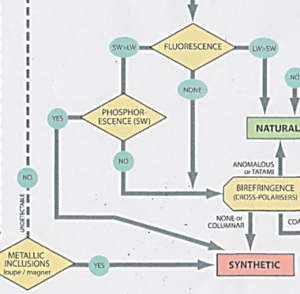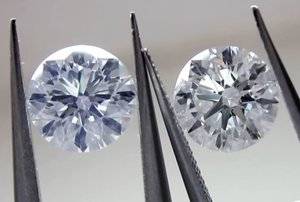Demon
Brilliant_Rock
- Joined
- Feb 16, 2009
- Messages
- 1,858
That doesn't hold up for chameleon diamonds though, does it? Because mine has a GIA report for natural color (and that it is a chameleon). I don't see phosphorescence with long wave, but I see it with short wave. (unless I'm totally confused by the chart, which could be the case lol)
Or is this chart just for white diamonds?
Last edited:





300x240.png)